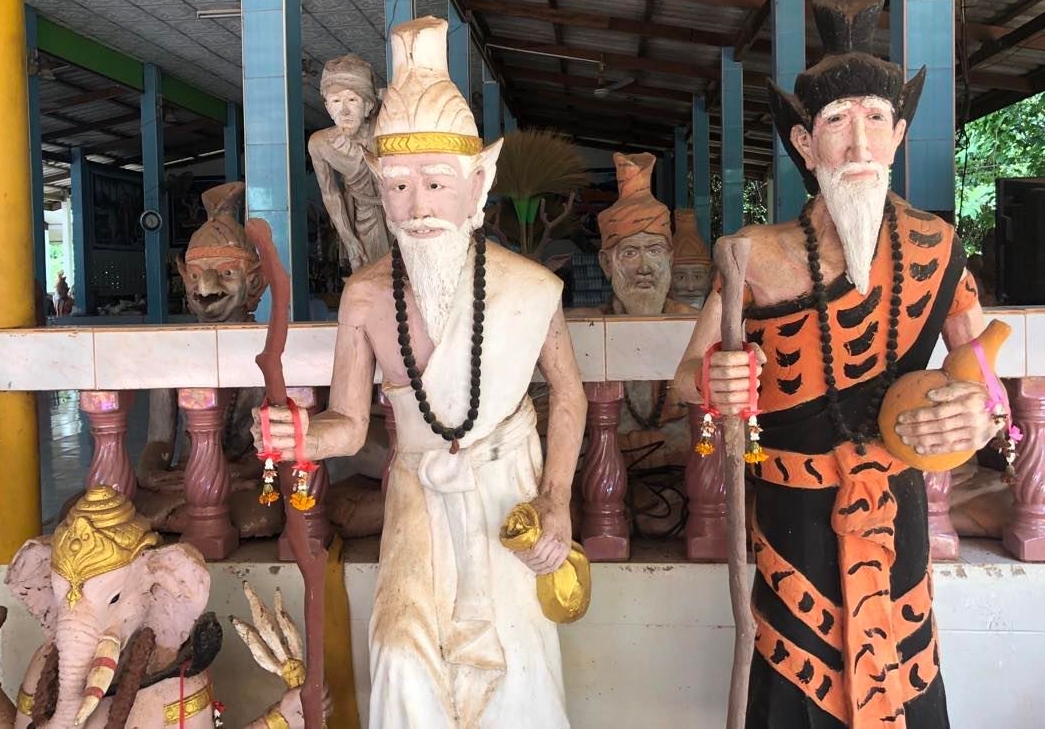Description
Samnak Song Pu Ruesi Don Pu Ta (สำนักสงฆ์ปู่ฤาษีดอนปู่ตา) in Sakon Nakhon has perhaps the largest collection of hermit monk statues in all of Northeastern Thailand. This may not be surprising, considering the name of this monastery or "samnak song" refers to "Pu Ruesi", which translates to Grandfather Hermit. In addition, Sakon Nakhon is filled with dense forests that make a perfect home for hermit monks.
On Google Maps, you'll find this unofficial temple named Pu Ruesi Don Pu Ta Priest's Camp Site (the Thai words "samnak song" being translated as priest's camp site). It is situated in a lightly wooded area amid rice fields. The entrance is a rustic teak wood archway, fitting for a hermit monk retreat. The vast collection of hermit monk statues are contained with the assembly pavilion where worshipers congregate to listen to the monks. These 100+ statues range from the classic to the quirky, including those with animal heads (such as an ape, deer, snake, and bird).
The hermit monk (ปู่ฤาษี) has a prominent place in Thai Buddhism, with his likeness not only depicted in statues and figurines, but also etched on sacred coins and other artifacts. In the famous Thai Forest Tradition of Northeastern Thailand (and Sakon Nakhon), they symbolize the ascetic practices of the forest monks, and are often depicted as residing in caves or holding walking sticks. The symbiotic relationship they have with nature and animals is sometimes illustrated by an animal head upon a human body, as was mentioned above.
After visiting Pu Ruesi Don Pu Ta Priest's Camp Site, you might like to take a little walk through the surrounding countryside (if it's not too hot). If you do, there is a nearby temple named Wat Pa Nong Waen only 900 meters away.










